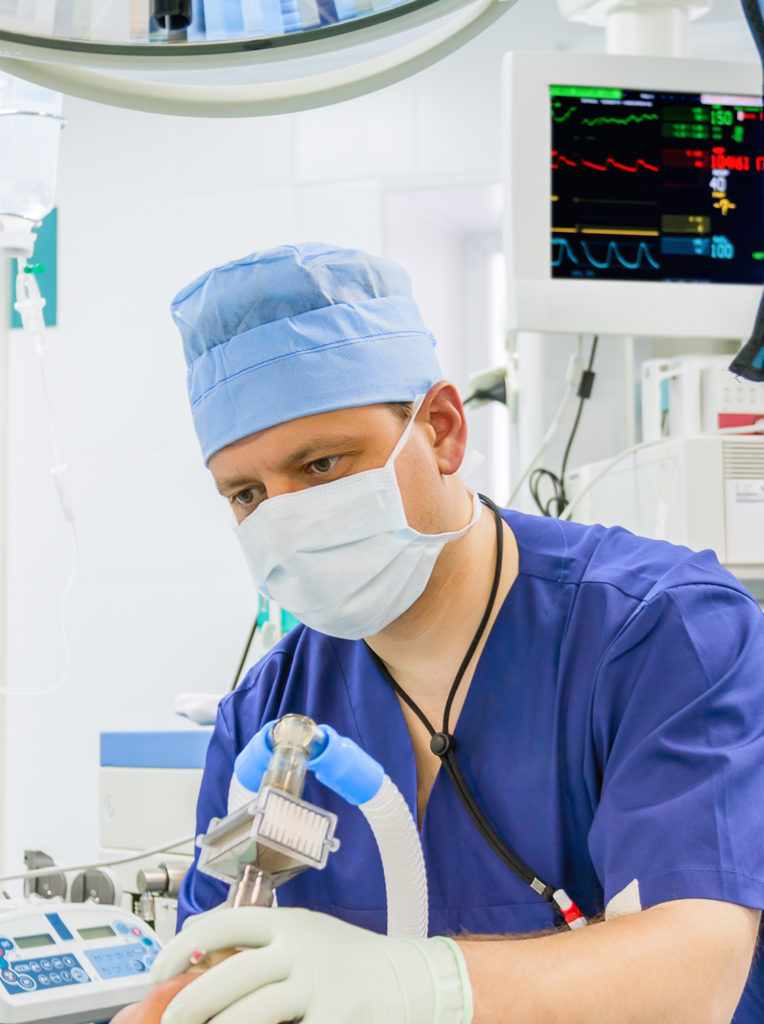
What Types of Anesthesia Are Available?
The four main types of anesthesia used during surgery are:
- Local anesthesia This is usually a one-time injection of medicine used to numb a small area for a procedure such as having a mole or skin cancer removed.
- Regional anesthesia Pain medication to numb a larger part of the body, such as the area below the waist, may be provided through an injection or a small tube called a catheter. You will be awake, but unable to feel the area that is numbed. This type of anesthesia is often used for childbirth and for surgeries of the arm, leg or abdomen.
- Monitored anesthesia care or intravenous (IV) sedation The physician anesthesiologist will provide medication that will relax you through an IV placed in a vein. Depending on the procedure, the level of sedation may range from minimal — making you drowsy but able to talk — to deep, meaning you probably won’t remember the procedure. This type of anesthesia often is used for minimally invasive procedures such as colonoscopies. IV sedation is sometimes combined with local or regional anesthesia.
- General anesthesia This type of anesthesia is provided through an anesthesia mask or IV and makes you lose consciousness. It is more likely to be used if you are having a major surgery, such as a knee replacement or open heart surgery.
The type of anesthesia you receive will depend on a variety of factors, including the type of procedure you are having, your health and in some cases, your preference.
Who Provides Anesthesia During Outpatient Surgery?

Before your outpatient surgery, talk to your physician to ensure your anesthesia care is led by a physician anesthesiologist, a medical doctor specializing in anesthesia, pain and critical care medicine, who works with your other physicians to develop and administer your anesthesia care plan. With 12 to 14 years of education and 12,000 to 16,000 hours of clinical training, these highly trained medical specialists help ensure safe, high-quality care. Your physician anesthesiologist will meet with you before your procedure to learn about any health conditions you may have as well as your previous experience with anesthesia to determine the pain management option safest and most effective for you. Your physician anesthesiologist will talk to you about any medications you take and let you know which medications are and are not safe to continue before the procedure.
How Should You Prepare for Outpatient Surgery?
Don’t eat or drink
Unless you’re having just local anesthetic, in most cases you may be asked not to eat or drink anything after midnight the day before your procedure. Although rare, food or liquid in your stomach could go into your lungs while you’re under anesthesia. Ask the facility or your physician anesthesiologist for guidance. In some cases, you may be able to drink clear liquids.
Bring a friend or relative
You most likely will be woozy or weak and won’t be able to drive, so be sure someone is available to take you home after your procedure.
Wear comfortable clothing
You may be sore from the surgery or have bandages that cover incisions so wear clothes that are comfortable and loose.
Plan for recovery time
If you had general anesthesia or sedation, you will probably be moved to a recovery room after surgery where your physician anesthesiologist will continue to monitor your breathing and heart function. In most cases you will be able to go home one to four hours after the procedure, depending on the type of surgery and anesthesia you had, and on your recovery. Have someone with you the first 24 hours after you return home, and plan to rest. You may also be told not to drive for a period of time, especially if you are taking pain medication, and not to make any important decisions for a day or two.
Be prepared for side effects
You may have soreness or pain and possibly feel nauseated or even vomit after surgery. Your physician anesthesiologist can advise you on the many types of medication available to alleviate pain. The nausea and vomiting usually subside as you recover.
Copyright © 2018 American Society of Anesthesiologists®
